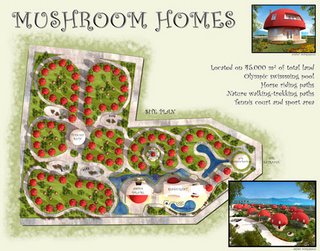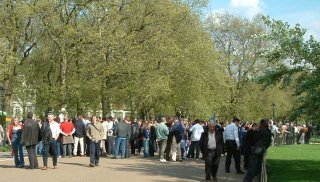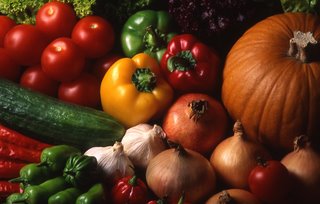What does it mean to be South African?
Besides having it printed on your birth certificate and passport. Every nationality has its own culture, quirks, expressions etc and one way or another you always end up carrying a bit of this culture with you, wherever in the world you may find yourself. One tends to notice our unique Saffer tendencies more when you are out of SA, andyou cant help but wonder where and how on earth we came up with these expressions.
Those of you who have lived in London – you know exactly what I am talking about. You can see and hear the boereseuns with their khaki shorts and Springbok jerseys on, and you cringe. And we don’t cringe because we are offended by them, or think that we would react the same way if we were back home. I just guess that they represent a sort of extreme type of Saffer and that you don’t want them parading around giving other people the “wrong” or extreme impression of us. I know that sounds extremely judgemental (ok I admit, it is judgemental of me!) but when you step out of your country and into another, your views and opinions inevitably change. For the better or for the worst.
Sometimes I go down into London and I just don’t want to be around fellow Saffers (besides my precious Saffer friends from back home) because you see the change in them. We do have a reputation for sticking together, staying in our little clicks. You end up thinking “Is this how we really act? Or is it just for show? Is it a rebellion of sorts or celebration of new found independence that causes this change in behaviour?” It is like we rediscover our patriotism!
Like food that you suddenly miss (or discover a new affection or craving for!) when you are out of Safferland:
Biltong and droewors
Niknaks, Chappies, Fizzers, Lunch bars, Tex bars, Super C’s, Jelly tots
Mrs Balls chutney
Pronutro
Zoo biscuits, Romany Creams, Marie biscuits, Tennis biscuits, Ouma rusks
Fanta Grape, Sparletta Cream Soda and Lemon Twist, Milo, Rooibos Tea
Ok, so that might be an extreme look at things, but I think that it all boils down to that we are all really proud of being a South African (no matter what the current state of affairs is there) and we want the world to know about it how beautiful our country and her people are.
Our South Africanisms become even more apparent and obvious when you surrounded by non-Saffers (like Aussies, Kiwis, Pommies) and other nationalities even though to try explain our unique social, political, religious, geographical divisions to a foreigner can be quite complex and long winded. You just want to hand them “An Idiots Guide” because our culture is so rich and diverse, that one really has to experience it.
I will always remember one time in Australia, Shireen, Shae (my cousin) and I went to the shop and bought some goodies. Anyway Shireen has bought two things (I struggle to remember if they were chocs, drinks or food! Porridge brain alert!) and Shae asked if she was going to have them both at the same time. To which Shireen replied: “No, I am having this one so long, and the other Ill have just now.” I merely nodded my head in understanding. But Shae just stared blankly at us and asked “Sorry, what on earth did you just say? Are you speaking English? How can you have something so long? How long? Whats long? And Just now? That doesn’t even make sense!” We ended up hosing (see definition below!) ourselves and my aunt (who had been to SA, and had married a Saffer) just shook her head – she understands that while most of us speak Saffers speak fluent English, that doesn't mean you'll always understand what we're talking about!
A beginner's guide to the real South African language and culture:
Ag
This one of the most useful South African words. Pronounced like the "ach" in the German "achtung", it can be used to start a reply when you are asked a tricky question, as in: "Ag, I don't know." Or a sense of resignation: "Ag OK, I'll have some more mieliepap then." It can stand alone too as a signal of irritation.
Amped (Full of energy)
Usually induced by adrenaline, feeling wired or high on fear, either before paddling into a huge ocean, or the sheer stoke of being alive afterwards.
Aweh ('Ah-wear') (Greeting) eg "Aweh my bru" (Hello my friend) Also howzit, yooit, hoesit, yo.
Braai (pronounced br-eye)
What is a braai? It is the first thing you will be invited to when you visit South Africa. A braai is a backyard barbecue and it will take place whatever the weather.
Babalaas ('Bub-ba-lars')
The hangover from hell, fondly called a "Barbie". The Babalas is no mythical beast. But look at yourself in the mirror and you'll wonder as you examine that furry tongue slithering in a mumbling, parched mouth, puffy eyelids scraping bloodshot eyeballs.
Bakkie
This word is pronounced "bucky" and can refer to a small truck or pick-up. Boerewors (vorse)Farmstyle sausage or "wors". (Literally, "Farmers Sausage"). It is a spicy sausage made from hundreds of secret recipes all over the Platteland and beyond. It is consumed in vast quantities on braais all over the country.
Brew (Beer)
"Buy me a brew bru." (Buy me a beer mate)Bru ('Broo'), broer , brah, bro, bree, brahdeen(Brother, friend, mate, china, buddy) Variations include brah, bru, broer, bror, bro, bra, brra and brah. It's from the Afrikaans word for brother (broer), which is pronounced 'broo' with a roll of the rrr at the end. That's why lazy English speakers adopted only the 'broo' sound.
Cooldrink, colddrink
This is the common term for a soda. Ask for a soda in South Africa and you will receive a club soda. Coca-Cola is a colddrink or cooldrink.
Check (Look, do you see?)
"You check" (See what I mean? Do you follow? Are you with me?) or "Check this out" (Look at this) or "Are you checking me skeef?" (Are you looking at me crooked - do you want to fight me?)
China (A friend) And a colleague or acquaintance, or someone you don’t know at all.
Chuck (Depart, leave, go, split,) "Let's chuck."
Dof ('Dorf')
(Afrikaans – “not bright”, “dull”) Stupid. Dunce. Someone who is dof, is not necessarily that way all the time. It is often used to describe a temporary loss of brain cells. It can also be used as a noun "You doffie." (You stupid person)
Doss (Sleep) or take a nap of kip
Dop
A dop is a drink, a cocktail, a sundowner, a noggin.
Eina (‘aynah’)
Widely used by all language groups, this word, means "ouch."
Fully
This is also an affirmation. If this was the question: "Did you check that?” this might be the answer: "Fully bru."
Guava ('gwava')
Apart from meaning the fruit, South Africans use guava as an alternative name for a bottom, backside, bum or butt. "His skateboard hit a rock and he fell on his guava."
Hone (Stink) eg "Your feet hone bru"!
Hose (Laugh) eg "He was hosing himself when he fell in the pool."
Hey
Often used at the end of a sentence to emphasize the importance of what has just been said, as in "You're only going to get donnered if you come in late again, hey?" It can also stand alone as a question. Instead of saying "excuse me?" or "pardon me?" when you have not heard something directed at you, you can always say: "Hey?"
Howzit
This is a universal South African greeting, and you will hear this word throughout the country. It is often accompanied with the word "Yes!" as in: "Yes, howzit?". In which case you answer "No, fine."
Isit? (Izzit?)
This conversational word is used widely and in response to just about anything. Derived perhaps from the English way of saying "Is it really?" If you don't feel like participating in a conversation with a dik ou at a braai, but don't wish to appear rude, just say "Isit" at appropiate gaps in his description of how he decapitated a Kudu with his bare hands.
Jawelnofine
This is another conversation fallback. Derived from the four words:
"yes", "well", "no" and fine", it roughly means "OK". If your bank manager tells you your account is overdrawn, you can, with confidence, say: "Jawelnofine."
Jislaaik (pronounced yis-like)
This is an expression of surprise, as in: "Jislaaik, I can't believe that I won the national lottery!"
Just now (In a little bit)
Universally used in South Africa, If someone says he will do it "just now", be warned. It might be in 10 minutes, 10 hours or never. "I'll clean my room just now, Ma." If someone says "now now", you're making progress. It won't be done immediately, or instantly, but probably less than 10 minutes, barring distractions that relegate it back to "just now".
Klap ('klup')
An Afrikaans word meaning smack, whack or spank. If you spend too much time in front of the TV during exam time, you could end up getting a "klap" from your mother. In America, that is called child abuse. In South Africa, it is called promoting education.
Koki (pronounced koh-key) - A coloured marker or felt-tip pen.
Kak ('Kuk')
This is used in all sorts of weird and wonderful ways, in exactly the same way as the word "shit". Hence, "Don’t talk kak" or "Don’t give me kak" or "You're so full of kak” or “Having a kak day” or “He is in the kak” …
Lappie (pronounced luppie) - A cloth used for various cleaning purposes. It might be a kitchen cloth or the oil rag that your china is using while he works on his car.
Lame (Weak, feeble) "That was a lame excuse,bru."
Lank (A lot, much, many)
It’s used as an all-encompassing South African adjective to boost the size of things, whether objects, emotions, or whatever. "There are lank people in the water.", "I dig her lank."
Larny (Fancy, designer clothes, snob, friend)
A number of variations on a word denoting someone who is well-dressed, or designer clothes, or a well-to-do function. The person can be larney. The clothes can be larney as in "Jees, you are wearing larney clothes." or "Why are you dressed so larney?"
Lightey ('laai-tie')
Is a youngster eg "That lightey is a pretty good surfer, for a grommet." (That boy surfs well, considering he belongs to a lower caste)
Loskop (Afrikaans: "Loose Head")
Absent minded, forgetful . Someone with plenty of space between the ears for the brain to rattle around in.
Lekker
An Afrikaans word meaning nice, this word is used by all language groups to express approval. If you enjoyed a braai thoroughly, you can say: "Now that was lekk-errrrrrr!" while drawing out the last syllable.
Naught (No, Oh no!)
Used like "nooit". "Naught bru! Don't drop in on me again or I'll moer you with a pole." (No mate! Don't try and steal my wave or I will beat you with a pole.)
Now Now (In a little while)
"We're going surfing now now." (We're about to go surfing. Exactly when? Well, that depends on how long we take to finish watching the video and putting on the roofracks). The good thing about Now Now is that it is probably going to happen quicker than the even more flexi-time "Just now."
Padkos ('put-koss')(Afrikaans – lit. “road food”)
Food for the journey. Padkos is usually a few sarmies (sandwiches), some cooldrinks, chips, fruit and maybe a lekker stukkie biltong.
Park off (Chill out) When you park off, you sit down and relax. It can also mean to sit down, as in, "Pete, why don’t you park here?"
Poepol ('Poo-pawl')
Idiot, twit. Enough said.
Robot (Traffic light)
Peculiar way of describing a traffic light. But then, we only got TV in the mid 1970s. Sometimes they pronounce the word "row-bow". An example of usage would be when giving directions: "Turn left at the second robot."
Rock up
To rock up is to just, sort of arrive (called "gatecrash" in other parts of the world). You don't make an appointment or tell anyone you are coming - you just rock up. Friends can do that but you have to be selective about it. For example, you can't just rock up for a job interview.
Rooibos (Red bush tea)
This tannin-free herb tea comes mostly from the Clanwilliam area of the Western Cape. It is made from the Aspalathus linearis bush. Homesick South Africans buy it from gourmet stores around the world, even if they don't like it.
Sarmie (Sandwich) Kids sometimes take a sarmie to school in the morning.
Scale
To scale something is to steal it. A person who is "scaly" has a doubtful character, is possibly a scumbag, and should rather be left off the invitation list to your next braai.
Schlep (Hassle, hard work) "It's such a schlep working for someone."
Shot (Thanks, goodbye, yours sincerely)
"Shot bru", "Shot Dot", "Shot". You will end your letter, "Shot, Peter" You will say "shot bru" when you say goodbye to a friend. You will also say, "shot" when your bru (mate) buys you a brew (beer).
Sjoe ('Shoe') (Afrikaans expletive)
"Sjoe broer, that wave was awesome." Also shew and shewee.
Skeef ('Skee-urf') (Afrikaans - Bent, crooked, provocative)
A classic saying heard in bars around South Africa is "Are you checking me skeef, China?" (Are you looking at me funny, brah?)
Skeem ('Scheme')(Think, opinion)
"You skeem?" (You think so?) "What do you skeem?" (What do you think?)
Skedonk (Afrikaans) Battered car. A really beaten up old jalopy.
So long
Meaning ‘in the meantime’
Sosatie (Kebab)
Made from either chicken, lamb or beef, this is often interspersed with pieces of tomato, green pepper, onion and sometimes fruit, especially apricot.
Stukkend ('Stuk-int')(Afrikaans – broken.)
Broken, ruined, finished, wrecked, to the extreme. There are a number of variations, such as "I'm going to moer you stukkend if you do that again" (I am going to beat you senseless if you do that again". "When she left me my heart was stukkend" (my heart was smashed tight with despair), "I was stukkend last night" (wrecked) or "I smaak you stukkend" (I dig you lank).
Sukkel ('Sukul')(Afriikaans – Struggle, have difficulty with) eg "With the current so strong the surfers are sukkeling out there today."
Swak (‘swuk’)(Bad, nasty, downer) A disappointed surfer will choon, "Swak bru, the surf is flat."
Samoosa (pronounced suh-moo-suh) - A small, spicy, triangular-shaped pie that has been deep-fried in oil. Made by the Indian and Malay communities, samoosas are popular with South Africans in general.
Shame
Unlike elsewhere in the world, this is an expression that broadly denotes sympathetic feeling. For example, when admiring a baby someone might say: "Ag shame!" to indicate that the baby is cute.
Skinner
Gossip, as in: "Hey china, have you heard the latest skinner?" Someone who talks behind someone's back is known as a skinnerbek. Example: "Jislaaik bru, I'm going to donner that skinnerbek for skinnering about me." Translation: "Gee my friend, I'm going to hit that guy for gossiping about me behind my back."
Skrik
This word means fright and will often be used as follows: "I caught a big skrik." You'll catch a skrik when there is a sudden noise behind your back or if a car veers in front of you on the highway.
Slap chips (pronounced slup chips) - French fries, usually soft, oily and vinegar-drenched, bought in a brown paper bag. "Slap" is an Afrikaans word meaning "limp", which is how French fries are generally made here.
Slip-slops, slops
Sandals or rubber thongs worn to the beach. These usually have a thin strap between the big toe and the toe next to it. Not to be worn with socks!
Spanspek - The South African word for cantaloupe.
Still - Often used to mean "on the other hand", as in "Still ... you never know." It is also used in place of "nonetheless" or "regardless".
Tackies
These are sneakers or running shoes. The word is also used to describe automobile or truck tires. "Fat tackies" are really wide tires, as in: "You've got lekker fat tackies on your V?, hey?"
Tjommie (“chômmy”)(Originally Afrikaans - Mate, friend, bru)
Slightly old fashioned Afrikaans word that originates from the quaint Victorian word "Chum". Not to be confused with chumming, when you throw gore into the water to attract sharks. That's not a lekker way to treat your chinas, especially if they are surf "tjommies".
Tune grief
To be tuned grief is to be aggravated, harassed. For example, if you argue with somebody about a rugby game at a braai and the person had too much dop, he might easily get aggravated and say.: "You're tuning me grief, hey!". To continue the argument after this could be unwise and result in major tuning of grief.
Yissus, yerre, yussus, yurruh (Expression of surprise)
Many use it without knowing where it comes from. It's an expression of surprise, or fear, or shock.
Still my tjommies, you check what I am trying to say?! Ag, I must chuck now now and skeem I go find a place to park off and munch my lekker sarmie and drink my rooibos. Have a lank cool weekend hey!!
Peace, love, and safe travels
Orangeblossom xxx

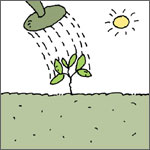
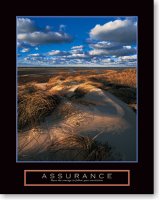
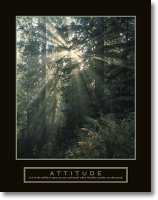
 Balance
Balance 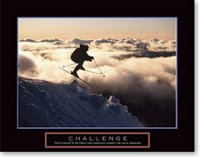 Challenge
Challenge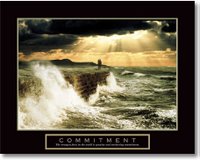 Commitment
Commitment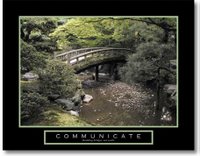 Communicate
Communicate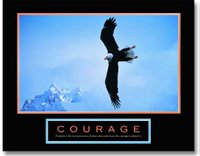 Courage
Courage Dedication
Dedication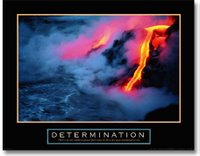 Determination
Determination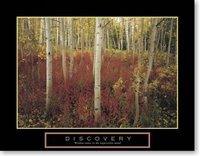 Discovery
Discovery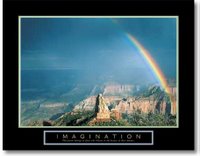 Imagination
Imagination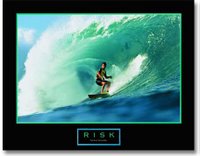
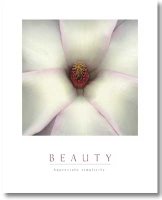 Beauty
Beauty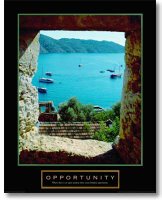 Opportunity
Opportunity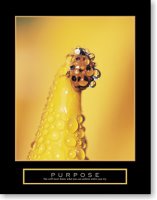 Purpose
Purpose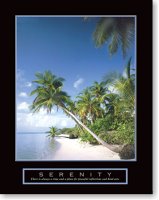 Serenity
Serenity